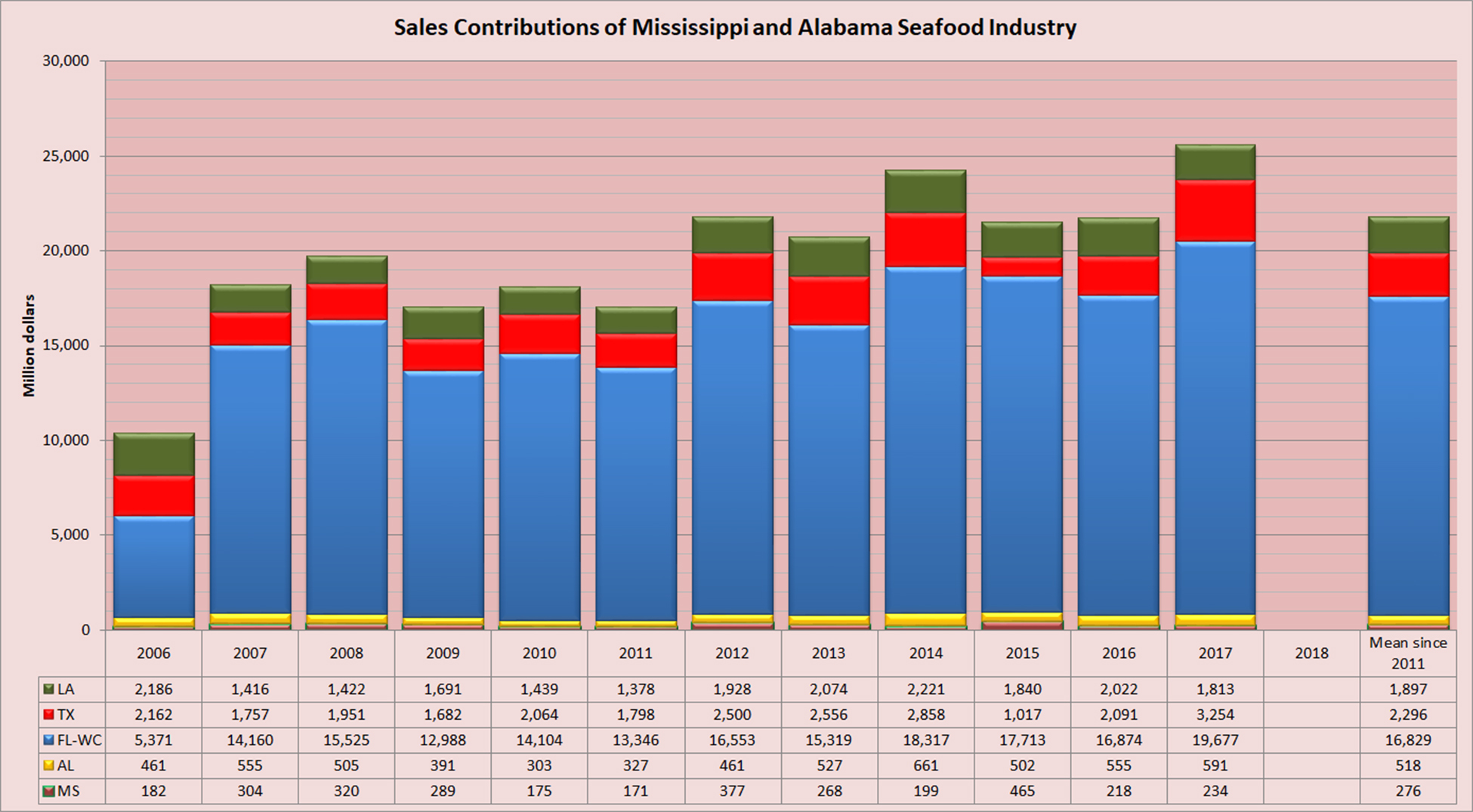Economic Impacts of the Seafood Industry in the Gulf of Mexico States
Economic Sectors
- The commercial harvesting sector corresponds to “finfish fishing” and “shellfish fishing” in the North American Industrial Classification System.
- The seafood processing sector primarily corresponds to “seafood canning” and “fresh and frozen seafood processing” in the North American Industrial Classification System.
- The seafood importing sector was added to the seafood industry starting in 2009. Estimates made in 2006 to 2008 do not include this sector.
- The seafood wholesaling sector corresponds to “fish and seafood merchant wholesalers” in the North American Industrial Classification System.
- The seafood retailing sector corresponds to “fish and seafood markets” in the North American Industrial Classification System.
- The eating and drinking places sector includes “full-service restaurants” andlimited-service restaurants”in the North American Industrial Classification System.
Components of Economic Impacts
The total economic impact is the sum of direct, indirect and induced impacts.
- Direct impacts express the economic impacts in the sector in which the expenditure was initially made.
- Indirect impacts result from changes in economic activity of other industrial sectors which supply goods or services to the sector being evaluated.
- Induced impacts are the result of personal consumption expenditures by industry employees.
Types of Economic Impacts
The income, value-added, and output impacts are expressed in dollars for the year specified by the user.
- Output or sales is the gross sales by businesses within the economic region affected by an activity.
- Labor income includes personal income such as wages and salaries and proprietors’ income or income from self-employment.
- Employment impacts are expressed in terms of a mix of both full-time and part-time jobs.

